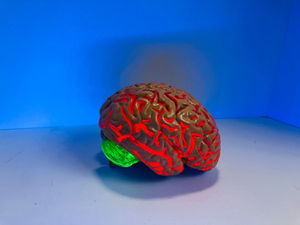Despite anatomy being the first topic to challenge the student in medical school for over 150 years, attention to variation of drug targets across tissues in the human body has remained scant even to the present day. GeneCentrix has pioneered the incorporation of transcript levels into drug target evaluation, but the even simpler question of how the resulting proteins vary across tissues has remained difficult to assess.

The protein products of the genes and the RNAs transcribed from the genes, of course, may vary widely in the cell. Some may be degraded as soon as they are formed. Some may not be translated at all. Some may persist indefinitely in the cell. In all, there is plenty of reason to doubt a 1:1 correlation between transcriptomics and proteomics.
The trouble is that assessing protein levels in cells is very difficult compared to transcripts with current technology. RNA and DNA can simply be sequenced easily and quickly now, to the point that whole genomes and transcriptomes can be recorded in minutes. Protein sequences cannot be read so easily. In addition, proteins are conformational, and only their folded conformations are stable and functional usually. So, much slower, noisier methods, like antibody binding and protein labeling, are required to identify proteins in the cell, and even so, quantifying them like this was a major challenge. So much so that nobody even tried to do it well into this century, even though the value of such data was painfully obvious.
Well, count on the Swedes, originators of the Nobel Prize, to take on such a grand challenge. The Human Protein Atlas (HPA) consortium doggedly collected reagents and techniques to bring a limited proteomic tissue map into view a few years ago. The result is an ongoing treasure trove of data now several versions upgraded. The atlas is a central resource to a wide variety of cutting edge scientific developments world wide.
Of course, the HPA is probably most relevant to drug discovery. Indeed, the study found that 30% of clinical drug targets are ubiquitously expressed in tissues, which means that 70% are not. Imagine your drug target is one of those 70%, wouldn’t you want to know in which tissues your drug is most likely to be active?






